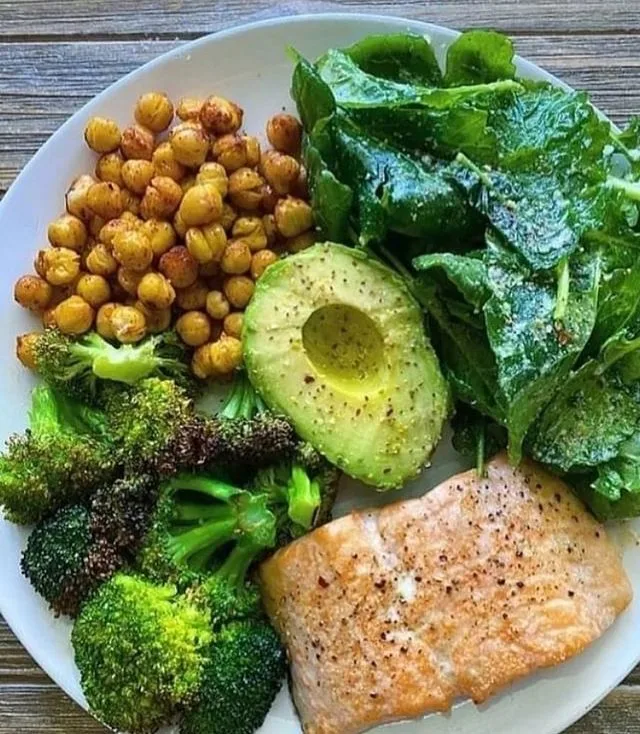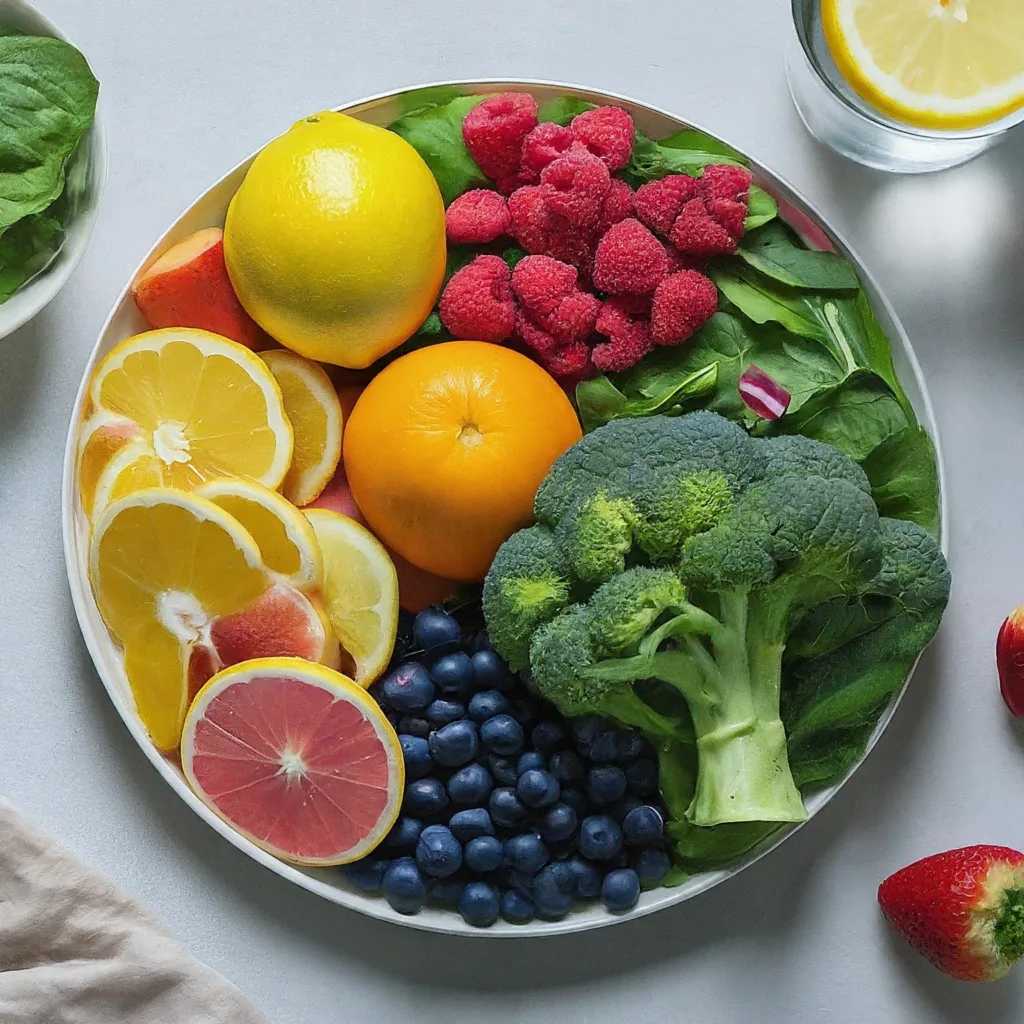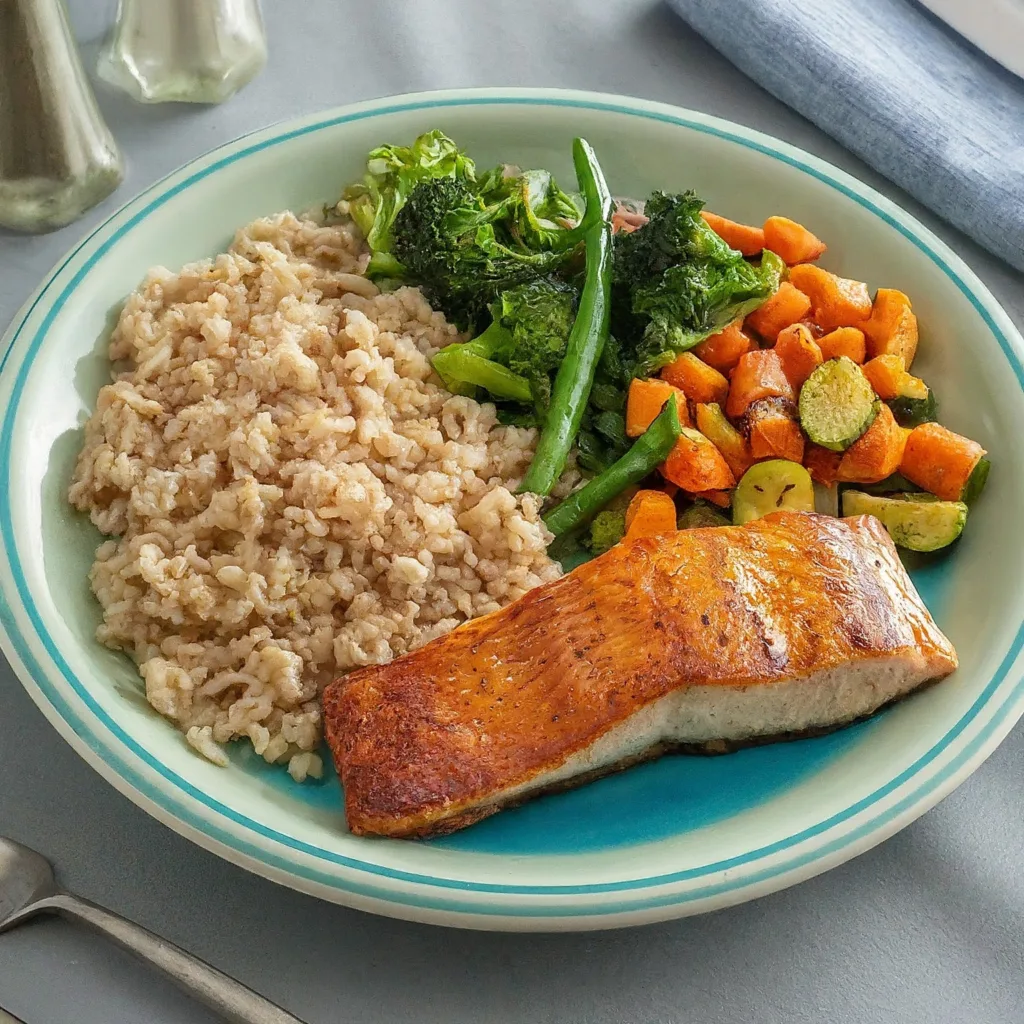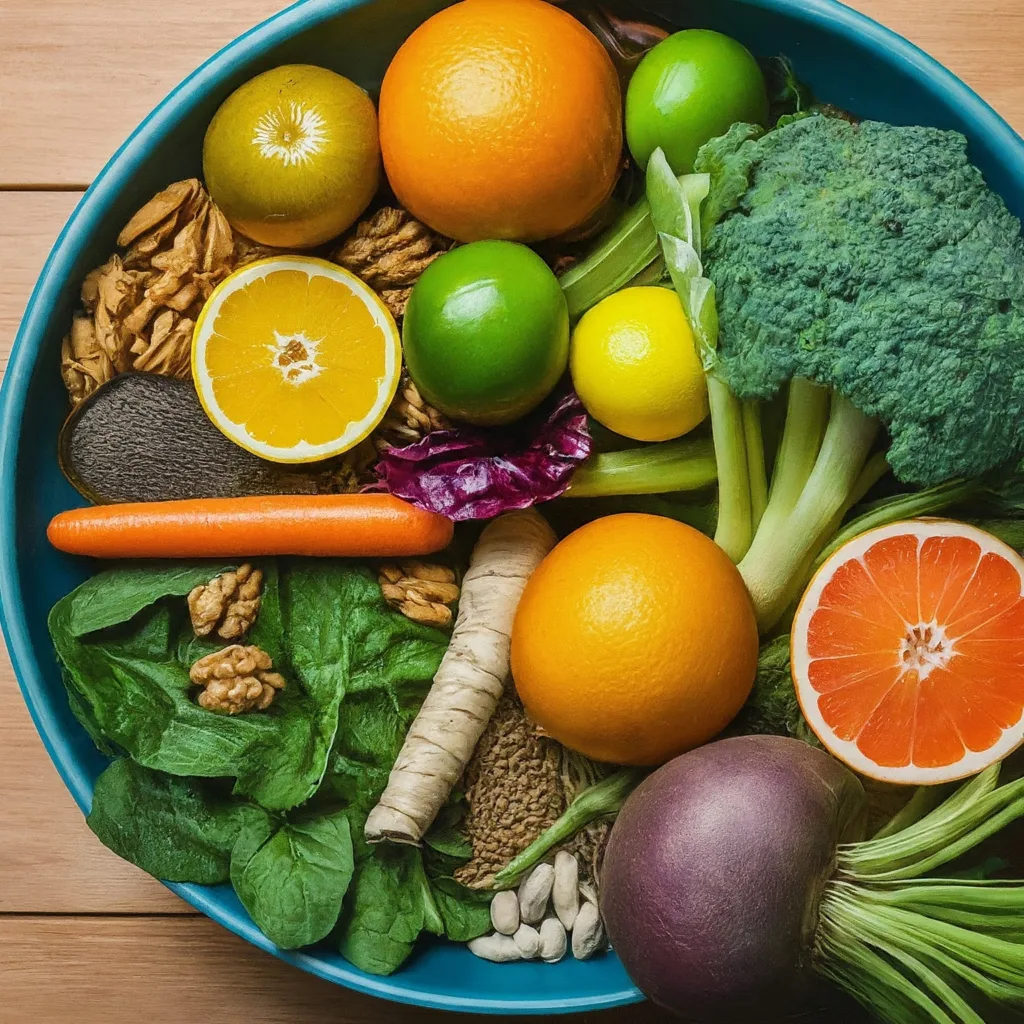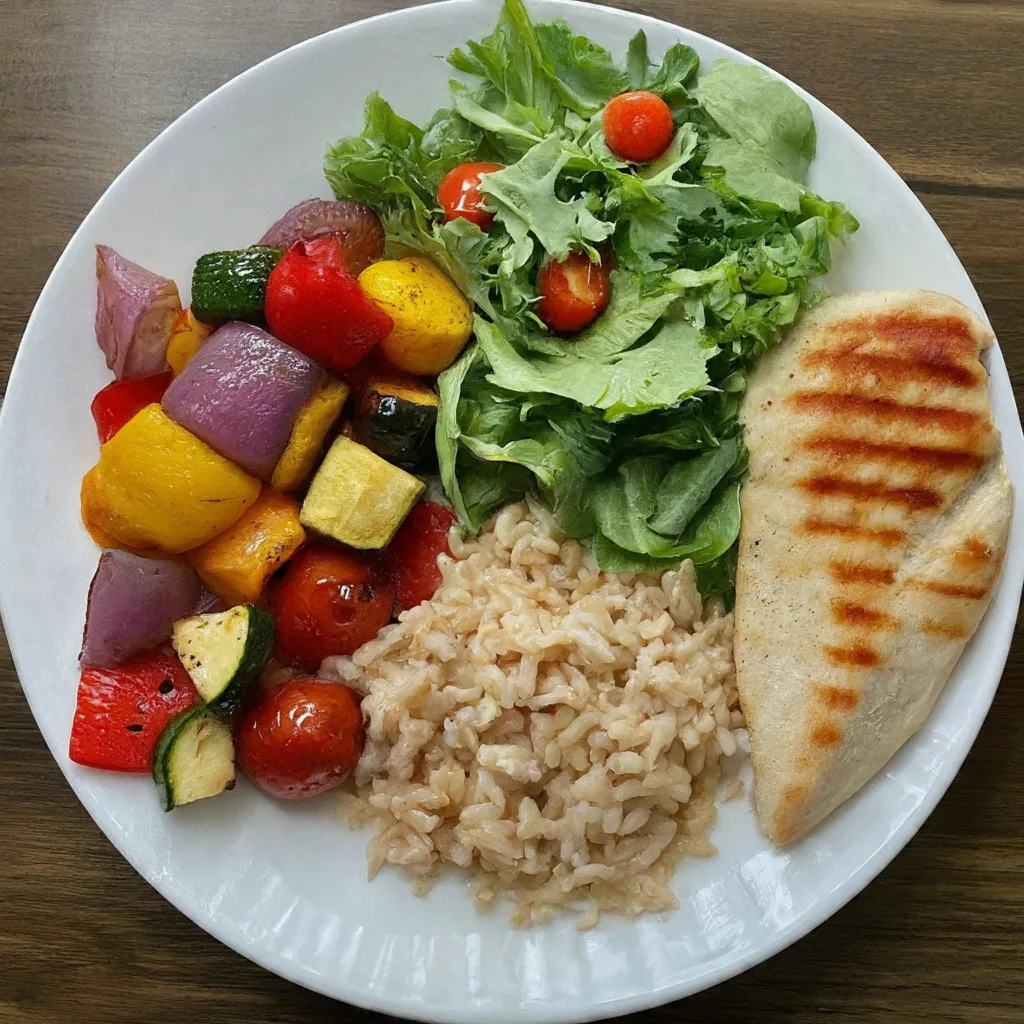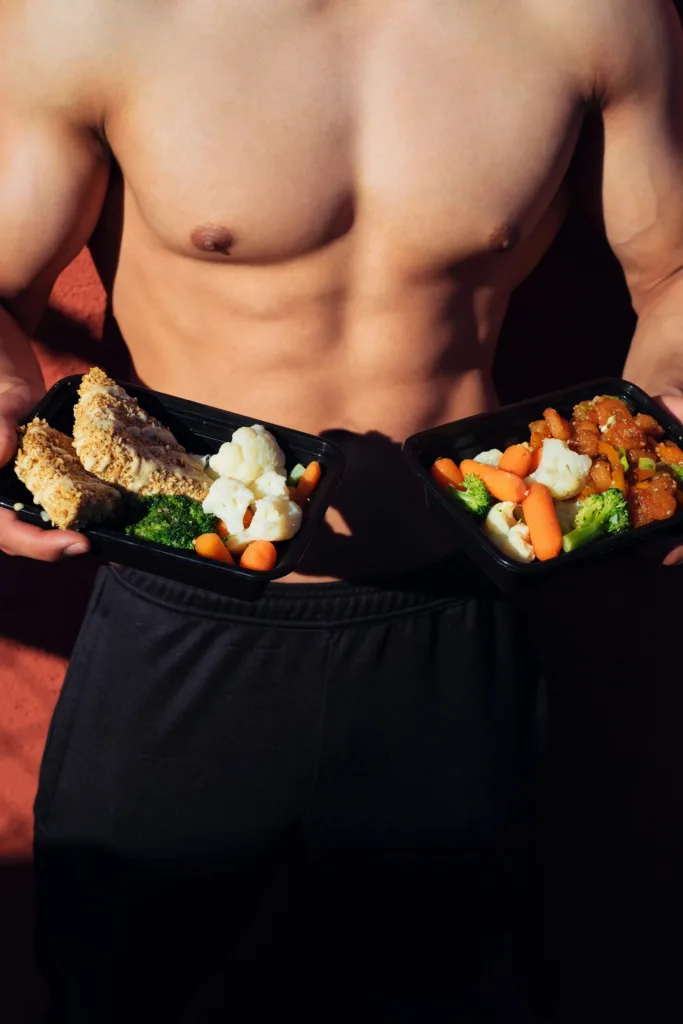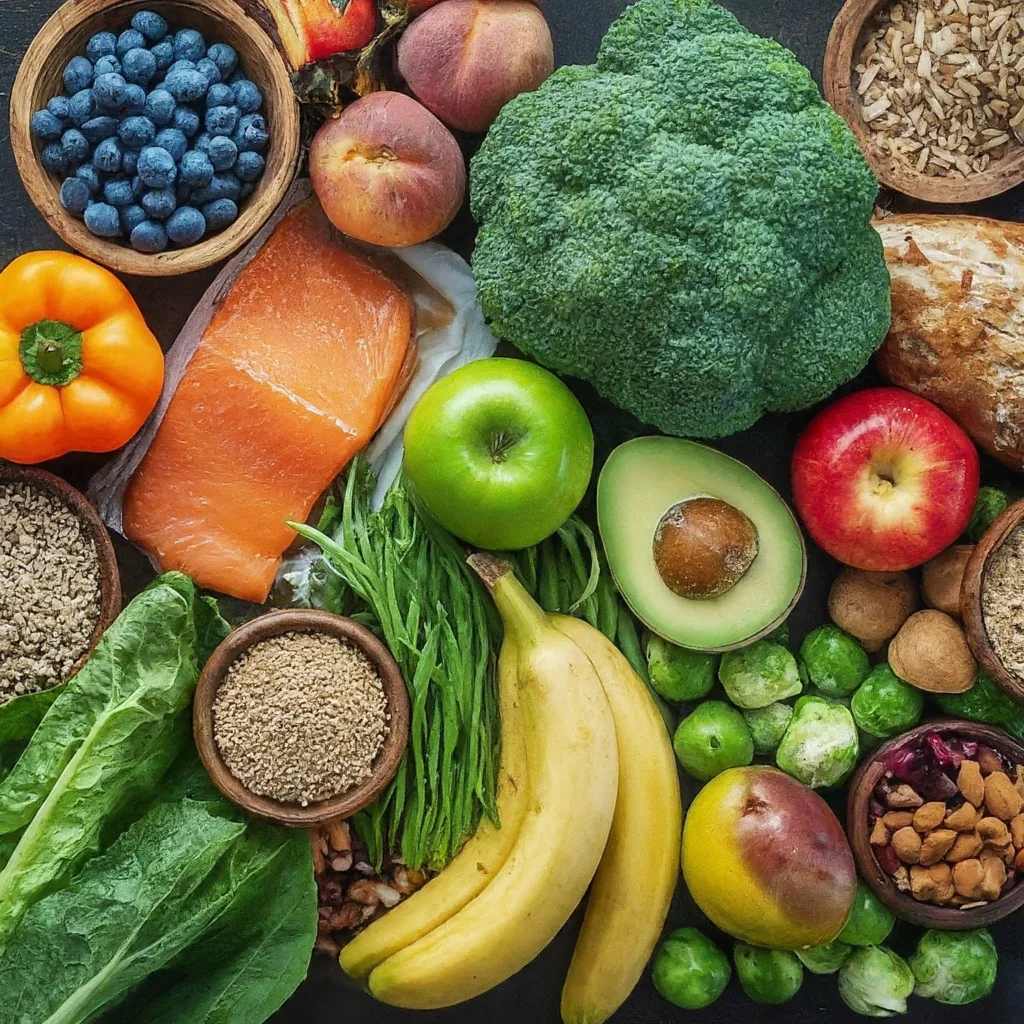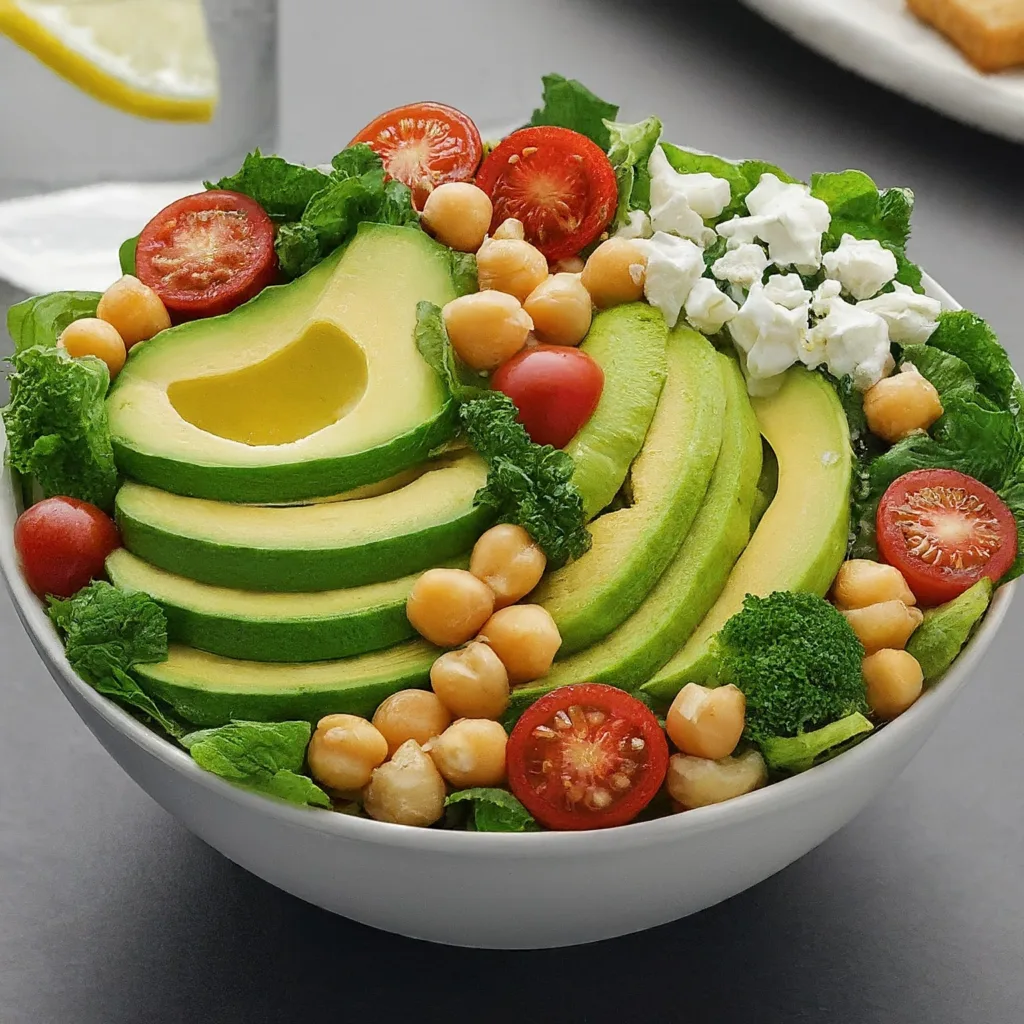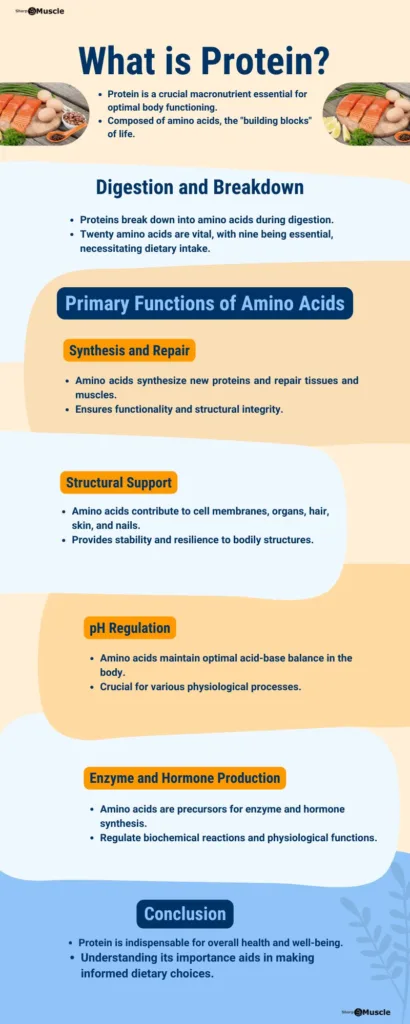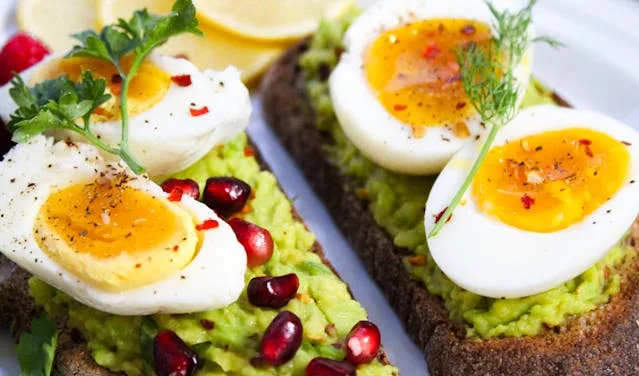Intermittent fasting is the most popular health and fitness trends, not a starvation diet. On the other hand, it’s also not a way to eat a steady diet of junk food and get away with it.
Intermittent Fasting Diet differs from normal dieting because it adapts to the way your body functions, it charges your body with nutrients that make you feel energized while enabling lasting weight loss.
What is Intermittent Fasting (IF)?
Intermittent Fasting (IF) is a planned program of eating that allows you to eat a normal, healthy diet most of the time, and then requires you to expend very few meals to take less time.
Intermittent fasting is not among fasting practices, it is neither a religious practice, nor is it motivated by lack of time or food – it is a choice. It is best described as an eating pattern that alternates between periods of eating and periods of fasting, each period lasting a predetermined amount of time.
There are some intermittent fasting plans that divide fasting and non-fasting periods into just hours, such as an eight-hour meal followed by a twelve- or sixteen-hour fast. More commonly, intermittent fasting is divided by days of the week.
- For example:
- 16:8 Method: In 16:8 method, the duration of fasting is 16 hours and the duration of eating is 8 hours.
- 5:2 Fast Diet: On the 5:2 Fast Diet, you eat a “normal” diet for five days of the week, with two days of fasting in between.
- Eat-Stop-Eat: This involves fasting for 24 hours once or twice a week, for example, from dinner one day until dinner the next day.
Intermittent Fasting (IF) 16/8 Method
There are different ways to practice IF, however, they all have one equality; They all include a feeding period and a fasting period.
- Duration of Fasting – This varies in length of time for different methods. During this, you either do not eat anything or consume zero calorie beverages.
- Feeding Duration – This also varies in the length of time for each method. In the meantime, you can eat whatever you want to avoid overfeeding. It is advised that you eat ‘normally’, not compensating for the period you went without food. Some methods, such as The Warrior Diet, may require that you eat in a certain order.
Before we look at the Intermittent Fasting (IF) 16:8 method, it’s important to point out that intermittent fasting is not for everyone. Below are some people who should not do intermittent fasting:
- Under 18 age group people
- Individuals with diabetes (both types 1 and 2) without seeing a doctor first
- Pregnant and lactating mothers
- Individuals with eating disorders
- People with low body fat
- People with high cortisol levels
Note: Before making any dietary, physical exercise program or changes to your normal habits, you should see a doctor or other relevant professional.
Intermittent Fasting 16/8 Lean Gain Protocol
As the name suggests, this method is divided into two periods; A 16-hour fasting period and a typical 8-hour meal period. It is important that you keep your feeding period constant. This means that you can decide not to eat from 8 a.m. to 4 p.m. today and shift it from 8 p.m. to 4 p.m. the next day. This is to create a schedule that is easy for your body and easy to follow. Remember, the hunger hormone ghrelin is released in relation to your eating patterns? Changing your patterns constantly can leave you hungry all the time and messing with the hormones.
This method is said to be more sustainable and easier to maintain because you don’t need to spend a very long time without food, and it can easily fit into most people’s daily lives. For example, the average person sleeps for 8 hours. You only need to fast for another 8 hours while awake, which makes the duration of the fast seem shorter.
For example, if your last meal was at 10 p.m., you fast until 2 p.m. the next day, some of which you’ll be sleeping, and the rest busy with work – you’ll barely keep track of time. This method is popular because you can have dinner with family or friends even before your feeding window closes.
Important note: Some research suggests that eating late at night produces more insulin spikes than during the day, affecting sleep quality and promoting overnight storage.
Intermittent Fasting 16/8 three factors to success
Factor-1: Diet and nutrition
As you probably know, nutrition plays an important role in any health and fitness journey. You know that vegetables are good for you, meat contains protein, and you probably know that processed food is generally bad. I’m not going to give you the same old bread, pasta blah blah spiel you’ve heard a hundred times. However, we’ll cover two essential electrolytes that are essential for your weight loss that people often lack as well as how much fat, protein, and carbs you should consume for best results.
Note: In the beginning, just focus on getting used to the window. You will get immediate results. Once you get used to the IF 16:8 diet lifestyle, move on to more advanced concepts for further results.
Fats, Carbs and Proteins
The aim of the game is to burn through glycogen stores, forcing the body to use up fat. Over time, the aim is to get the bodies used to burning fat as the primary fuel source to stay lean throughout the year. The best way to do this is to restrict carbs and increase the consumption of fat. It is worth noting that protein should be kept at a moderate level, as too much can be converted into glucose and stored by the body as glycogen.
Below are some examples of common macros. I would like to take this opportunity to note that you do not need to be keto or follow a ketogenic diet to get Intermittent Fasting (IF) results.
Macronutrients: Fats, Carbs and Proteins
| Protien, carb and fat | Micro breakdown (in %) |
|---|---|
| Option-1 | |
| Proteins: | 30 |
| Carbohydrates: | 20 |
| Fats: | 50 |
| Option-2 | |
| Proteins: | 30 |
| Carbohydrates: | 10 |
| Fats: | 60 |
| Option-3 | |
| Proteins: | 25 |
| Corbohydrates: | 10 |
| Fats: | 65 |
Note: Always be sure to consult the doctor before changing the diet.
Protein Guidelines
A common mistake when trying to lose weight is eating too much protein, excess protein can be converted to glucose (sugar) and stored as glycogen. Due to the difference in atomic structure, glucose cannot be converted back to protein. Use the given equations to calculate your protein needs based on your goal.
Weight loss
For weight loss, 0.36g – 0.7g per pound of target body weight.
- Example: When the weight is 198lb, but the target weight is 174lb.
- 0.36 x 174 = 62.64g
- 0.70 x 174 = 121.8g
The ideal daily intake of protein is 62 grams – 122 grams.
Take in at least 62 grams of protein per day to maintain muscle mass, but eat no more than 122 grams per day to avoid converting protein into glucose.
Bulking
For bulking, 1.5g – 2g per pound of target body weight.
- Example: When the weight is 165lb, but its target weight is 200lb.
- 1.5 x 165 = 247.5g
- 2 x 165 = 330g
The ideal daily protein intake is going to be 247g – 330g.
Certainly, supplements will be needed, as the amount of food needed to obtain this amount of protein may be unbearable to eat. When bulking, it is common to have an increase in body fat percentage, but a cutting phase will be implemented once the target weight is achieved.
Carbohydrate Guidelines
Carbohydrates can be difficult to calculate, as it varies from person to person. Below are the guidelines you can follow.
Keto
For keto, 30 grams or fewer per day.
These should mainly come from leafy greens. This method is a principle derived from the ketogenic diet.
Plateau Buster
For plateau buster, 100 grams or fewer per day.
- These should mainly come from leafy greens and resistant starch.
- If you’ve hit a plateau, the principle is easy.
Beginners
Beginners eliminate refined sugars, instead of focusing on macros, focus on eliminating refined sugars and incorporating resistant starches.
Resistant starch
It is resistant to digestion and acts like soluble fiber. They help reduce blood sugar levels and insulin resistance, among other things. These are a better choice than traditional carbohydrate alternatives.
- Example:
- Sweet potatoes and yams instead of potatoes
- Oats instead of cereals
- Cooked and cold rice instead of hot rice
- Green bananas instead of other fruits
Fat guidelines
Some people still find it difficult to understand that fat intake does not automatically transfer to “being fat”.
If you want to burn fat as fuel to lose weight forever, you need to think about eating more fat than you might have thought healthy. I’m not saying you have to go keto, but a consistent intake of saturated fat (yes, you read that right) will help your body burn fat as fuel.
Avoid Trans-Fat and Hydrogenated Oils
Partially hydrogenated oils contain trans-fats. Trans fat causes a variety of health problems, including an increase in LDL (“bad”) cholesterol.
Eat saturated fat
Fully hydrogenated fats become saturated fats. Difference? They do not contain any trans-fats. If it remains solid at normal room temperature, it is safe to assume that it is saturated fat.
- Examples of healthy fats:
- Whole eggs
- Cheese
- Fatty fish
- Extra virgin olive oil
- Coconut oil
- Avocado
- Full fat curd
- Nuts
Cooking guidelines
Saturated fat is the safest substance to cook. Unlike other fats and oils, saturated fat does not hydrogenate under heat.
Tips
Avoid cooking in vegetable and soybean oils as they contain hydrogenated oils. Although olive oil is a healthy form of fat when it is cold, it becomes partially hydrogenated when heated. Use for dressing, but not for cooking.
Remember, if it’s solid at normal room temperature, it’s probably saturated fat. Any fat that remains liquid at normal room temperature (even healthy ones) will hydrogenate under heat.
Factor-2: Exercise
There are many amazing benefits of exercise. It can help with depression and anxiety, as well as help you achieve your beauty goals. Exercise is also going to play a role in the balancing of hormones mentioned earlier. Exercise promotes the production of HGH, but will also help to quickly deplete glycogen stores.
What is the best exercise while fasting?
It is a popular belief that long-term cardio at a steady pace is the best way to burn fat. Not so in my experience. While this has its benefits, when it comes to burning fat and the Intermittent Fasting (IF) lifestyle, I have had far more success with HIIT training for both female and male clients.
HIIT (High Intensity Interval Training)
If burning fat is your mission, I recommend HIIT training. Fast-paced workouts that can be done in 30 minutes make it ideal for someone with a busy lifestyle. HIIT can be done with bodyweight exercises, barbells, kettlebells and dumbbells. I usually use exercises that use more than one muscle group. For example, a row instead of a biceps curl. Short bursts are the name of the game at almost maximum effort. Below are some guidelines you can play with.
Beginner
| Exercises | Time |
|---|---|
| Squat | 10 seconds |
| Running on the spot | 10 seconds |
| Star Jumps | 10 seconds |
EXERCISING TIPS: Do each exercise 10 seconds; Do each exercise back-to-back for 3 rounds and rest 30 seconds between rounds.
Intermediate
| Exercises | Time |
|---|---|
| Burpees | 10 seconds |
| Weighted squat | 10 seconds |
| Press Up | 10 seconds |
| Medicine Ball Slam | 10 seconds |
| Battle Ropes | 10 seconds |
EXERCISING TIPS: Do each exercise 10 seconds; Do each exercise back-to-back for 3–6 rounds and rest 20 seconds between rounds.
Advanced
| Exercises | Time |
|---|---|
| Burpee or High Jump | 20 seconds |
| Box Jump | 20 seconds |
| Kettlebell Swing | 20 seconds |
| Clean and Press | 20 seconds |
| Battle Ropes | 20 seconds |
| Kettlebell Row | 20 seconds |
EXERCISING TIPS: Do each exercise 20 seconds; Do each exercise back-to-back for 8–10 rounds and rest 10 seconds between rounds.
Factor-3: The Importance of Recovery, Rest and Sleep
Getting proper sleep can skyrocket the results. During sleep, your body mainly enters into anabolic (building) type phase. Your body believes it or not to repair damage, replace cells, and burn fat.
Good sleep is linked to the creation of this hormone. If you are not getting quality sleep at the right time, then all the exercise and healthy eating may not give the results you were hoping for. If you’ve ever dieted before patting yourself at the gym only to see little or no results, you know how frustrating it can be! Maybe proper sleep was the missing piece you needed!
Tips to get a good night’s sleep
1. Get more sunlight
The body’s circadian system or “body clock” plays a huge role in the production of hormones. It is heavily influenced by sunlight.
Sunlight, especially morning sunlight, prompts glands and organs to wake up, queuing them to produce daytime hormones (most of which help keep you alert and awake). Your circadian clock gets disturbed if the body gets unskilled sunlight in the morning and then too much artificial light at night (such as TVs, laptops and smartphones). This can cause the glands to produce hormones that prevent you from sleeping.
Lack of good sleep is going to hinder the production of hormones like HGH and can even increase the build-up of hormones like insulin. If this happens, you will not be able to burn fat overnight!
2. Avoid screens before sleeping
If you’re the kind of person who tends to fall asleep at 11 p.m. watching TV or watching YouTube on your phone, the quickest way to improve sleep would be to stop using your devices at least an hour before bedtime. Give.
Remember how the body clock is affected by sunlight? It is also affected by artificial light. The eyes are a major light sensor, and the blue light produced by your favorite screen stimulates the body to produce daytime hormones that are primarily meant to keep you awake and active.
With these bad boys rushing your body, it’ll be harder to fall asleep, and your body won’t be producing those sweet anabolic hormones you need to repair and lose weight.
3. Sleep in the dark
While it may seem obvious after the first two tips, some of you ignore this tip when not told. You can’t control the outside lights, like street lamps and annoying security lights, but they can still affect your sleep on a molecular level, hindering repair and making us tired the next day. Darken your windows with heavy-duty curtains to stop outside light ruining your healing process!
4. Sleep in quality not quantity
During this window, your body produces the optimum amount of hormones needed for repair and fat loss.
Improving sleeping habits is the key to weight loss, building muscle, and living a healthy life in general. This important factor is often neglected in weight loss programs, perhaps being the missing piece you need! Good sleep is supposed to ensure proper adaptation of key hormones to burning fat, and may be even more important than increasing your workouts at the gym. Set a consistent bedtime and be sure to get to bed about 30 to 60 minutes earlier.
16/8 Intermittent Fasting Diet Plan
- By following this 16/8 Intermittent Fasting diet plan, you fast for 16 hours and limit your eating to an 8-hour eating window.
- It is really up to you whether you will decide to restrict yourself from eating for 16 hours out of 24 hours. You can choose the dining window from 8 a.m. to 4 p.m., 10 a.m. to 6 p.m., 8 p.m., or any time as long as it’s not 16 consecutive hours.
- Most people who follow an Intermittent Fasting diet schedule prefer to skip breakfast instead of dinner, but different people have different rhythms of life.
- The best part is that out of 16 hours, you will probably be sleeping at least 7-8 hours, so we are really talking about 9-8 hours of fasting every day.
- It is also worth noting that we believe that the Intermittent Fastening 16/8 method is the most durable and easiest to start.
Sample Intermittent Fasting Meal Plan On Fasting Day
On each fasting day, you will have two meals and two snacks. Women will eat 500 calories per day, while men 600 calories per day. Men only need to double the snack portion to get the required number of daily calories.
On all fasting days, permitted beverages are limited to water, unsweetened hot or iced tea, and black coffee.
MEAL-1 (Yields: 2 servings)
| Ingredients | Quantities |
|---|---|
| Whole wheat toast | 2 slices |
| Shredded cheese | 1 tablespoon |
| Tomato | 6 small |
| Garlic | 1 clove |
| Freshly ground black pepper | ¼ teaspoon |
| Olive oil | 1 teaspoon |
| Salt | ½ teaspoon |
How to make it:
- In a skillet, heat olive oil over medium heat. Add the garlic and tomatoes to the pan and fry for 2 minutes, while stirring occasionally. Season with salt and pepper, then transfer to a plate to keep warm.
- In the same skillet, fry the eggs for 2 minutes. Flip and cook to desired cooking time (30 seconds for easy, 1 minute for medium-high, 2 minutes for over well).
- Place 1 egg on each slice of toast, top with half a tomato and sprinkle with half the Parmesan cheese.
MEAL-2 (Yields: 2 servings)
| Ingredients | Quantities |
|---|---|
| Chicken breast (cooked) | 6 ounces |
| Whole wheat tortillas | 2 (8-inch) |
| Mild curry powder | ½ teaspoon |
| Apple | 1 small |
| Lettuce | 1 cup |
| Mustard | 1 teaspoon |
| Plain low-fat yogurt | 2 tablespoons |
How to make it:
- Mix chicken, plain low-fat yogurt, mustard and curry powder in a small bowl; Stir well to combine. Add apples and stir until blended.
- Divide lettuce among whole wheat tortillas and pour half the chicken mixture on top of each.
- Roll and serve burrito-style.
SNACKS
| Ingredients | Quantities |
|---|---|
| Apple | ½ medium |
| Sprinkled with cinnamon | – |
| Crispbread | 1 slice |
| Cottage cheese | 1 ounce |
SNACKS OPTION-1
| Ingredients | Quantities |
|---|---|
| Celery stalk | 1 small |
| Almond butter | ½ tablespoon |
| Avocado with lime juice | 2 slices |
SNACKS OPTION-2
| Ingredients | Quantities |
|---|---|
| Grapes (frozen) | 10 |
| Babybel cheese | 1 light |
Sample Intermittent Fasting Meal Plan On Non-fasting Day
Meals on non-fasting days are lower in calories, but are suitable for guests or the whole family, so you can make the most of them to make four servings. If you like, you can either halve the ingredients or freeze additional servings for easy reheating for another day.
BREAKFAST (Yields: 4 servings)
| Ingredients | Quantities |
|---|---|
| Vanilla Greek yogurt | 24 ounces |
| Cocoa powder (unsweetened) | 2 tablespoons |
| Bananas | 2 medium |
| Low-fat milk | ½ cup |
| Honey | 1 teaspoon |
| Ice cubes | ½ cup |
How to make it:
- Put the Vanilla Greek yogurt and banana in a blender and blend on high until the banana is soft. Add honey, cocoa and low-fat milk and mix again until well combined.
- Add ice cubes and blend again, pulsing as needed, until mixture is smooth and thick.
BREAKFAST OPTION (Yields: 2 servings)
| Ingredients | Quantities |
|---|---|
| Whey protein isolate powder (unflavored) | 4 scoops |
| Almond extract | ½ teaspoon |
| Nutmeg (grounded) | 2 medium |
| Almond butter | 2 tablespoons |
| Ice cubes | 10 |
| Honey | 2 tablespoons |
| Cold water | 2 cups |
How to make it:
- Combine cold water, protein powder, almond butter, honey, almond extract and nutmeg in a blender. Blend it on high for about 30 seconds, or until smooth.
- Add 10 ice cubes and blend again until thick and creamy.
- Drink it immediately.
LUNCH (Yields: 4 servings)
| Ingredients | Quantities |
|---|---|
| Shrimp (cooked, peeled and deveined) | 1 dozen large (26–30 count) |
| Red onion (sliced) | ½ cup |
| Yellow bell pepper | ½ |
| Orange bell pepper | ½ |
| Dried cranberries | ¼ cup |
| Balsamic vinegar | ¼ cup |
| Cumin (grounded) | ¼ teaspoon |
| Romaine lettuce (chopped) | 2 cups |
| Paprika | ¼ teaspoon |
| Lime juice | ¼ cup |
How to make it:
- In a small bowl, toss the shrimp with the lemon juice, cumin, and paprika and let them sit in the refrigerator for 30 minutes. Drain.
- In a large bowl, mix lettuce, onion, bell pepper and cranberries until evenly combined.
- Add the marinated shrimp and your favorite balsamic vinaigrette and toss again.
- Divide among 4 salad plates and serve.
DINNER (Yields: 4 servings)
| Ingredients | Quantities |
|---|---|
| Black beans | 2 (15-ounce) cans |
| Chicken stock | 2 cups |
| Carrots (thinly sliced) | 1 cup |
| Freshly ground black pepper | ¼ teaspoon |
| Plain yogurt | 1 cup |
| Green onions (sliced) | ¼ cup |
| Yellow onions (chopped) | ½ cup |
| Cumin (grounded) | ½ teaspoon |
| Garlic powder | ½ teaspoon |
| Chili powder | ½ teaspoon |
| Salt | ½ teaspoon |
How to make it:
- In a large saucepan over medium-high heat, combine black beans, chicken stock, carrots, onion, garlic powder, cumin, chili powder, and salt. Stir well.
- Bring the soup to a boil, reduce the heat to medium, cover and cook, stirring occasionally, for 20 minutes.
- To serve, transfer into 4 bowls, top with a dollop of curd and garnish with spring onions.
Low-calorie sweets and treat options
| Fruits | Quantities | Calories |
|---|---|---|
| Apple (juice or cider) | ½ cup | 60 calories |
| Kiwis | 2 medium | 95 calories |
| Blueberries | 1 cup | 85 calories |
| Pineapple | 1 cup | 75 calories |
| Cherries | ¼ cup | 100 calories |
| Watermelon | 2 cups | 90 calories |
| Jelly beans | 20 small | 90 calories |
| Pomegranate juice | ⅔ cup | 90 calories |
| Strawberry sorbet | 1 small scoop | 100 calories |
| Prune juice | ½ cup | 90 calories |
| Fruit yogurt (fat-free blended) | ½ cup | 90 calories |
| Vanilla low-fat frozen yogurt | 1 small scoop | 90 calories |
| Frozen fat free yogurt | ½ cup | 95 calories |
| Figs | 2 | 80 calories |
| Caramels | 2 pieces | 80 calories |
| Dark chocolate | 1 ounce | 100 calories |
| Chocolate pudding | 1 fat-free (4-ounce) container | 60 calories |
| Chocolate fat-free milk | ½ cup | 75 calories |
| Chocolate sandwich cookies | 2 | 100 calories |
| Oatmeal cookies | 2 small | 100 calories |
Tips to Survive Intermittent Fasting (IF)
Some people can go 24 hours or more without food, but for others, less than six hours is a real struggle. If you’re in the latter group, that doesn’t mean IF isn’t for you. There are a few ways to help you cope.
- Stay Hydrated – Sometimes your bodies interpret dehydration as hunger. You can feel those hunger pangs and think, ‘Oh, I need to eat something’. Sometimes all you have to do is take a few sips. Drink plenty of water during the fast. You can also drink black coffee, black tea, sparkling water and other zero calorie beverages.
- Keep busy – Have you ever been hungry at work but haven’t had a chance to eat? Often, when you finally get a chance to eat, you’re not starving. You can replicate this by staying busy. Remember, hunger comes in waves.
- Give it time – sometimes we get very impatient, especially when it comes to losing weight. We diet or exercise for two days then we check the scale and mirror to see the ‘big change’ and then we get frustrated. What happens when you get frustrated? You fall off the wagon. If you want to go anywhere with Intermittent Fasting (IF), you have to time it. First, give the eating pattern time to work wonders on your body. You just need to keep going, and the change will show itself.
- Give your body time to adapt to the Intermittent Fasting (IF) – you stop eating six meals a day every day. Your body may react differently now that it has to eat less food. Hunger, headache and sometimes body weakness are among the discomforts you may experience. Don’t give up! Use logic though.
Proven Health Benefits of Intermittent Fasting (IF)
Research shows that Intermittent Fasting helps extend life, regulate blood sugar, manage cholesterol, burn fat, and more. The benefits of Intermittent Fasting are well documented in helping people look better, feel better, control weight, and live healthier and longer.
The Intermittent Fasting (IF) reduces body fat and weight, blood lipids (triglycerides and LDL cholesterol), blood pressure, cancer risk, inflammation, oxidative stress. 1
Intermittent Fasting increases fat burning, metabolic rate, cellular repair (autophagy), growth hormone release. 2
The Intermittent Fasting improves appetite control (through changes in ghrelin), heart function, blood sugar, effectiveness of chemotherapy (allowing for higher doses more often). 3
- Nutrients. 2019 Mar; 11(3): 673. Published online 2019 Mar 20. doi: 10.3390/nu11030673. PMCID: PMC6471315, PMID: 30897855. Intermittent Fasting in Cardiovascular Disorders—An Overview. Bartosz Malinowski, Klaudia Zalewska, Anna Węsierska, Maya M. Sokołowska, Maciej Socha, Grzegorz Liczner, Katarzyna Pawlak-Osińska, and Michał Wiciński[↩]
- Published online 2015 Apr 6. doi: 10.1016/j.jand.2015.02.018. PMCID: PMC4516560, NIHMSID: NIHMS663671, PMID: 25857868. INTERMITTENT FASTING AND HUMAN METABOLIC HEALTH. Ruth E. Patterson, PhD, Gail A. Laughlin, PhD, Dorothy D. Sears, PhD, Andrea Z. LaCroix, PhD, Catherine Marinac, BA, Linda C. Gallo, PhD, Sheri J. Hartman, PhD, Loki Natarajan, PhD, Carolyn M. Senger, MD, María Elena Martínez, PhD, and Adriana Villaseñor, PhD[↩]
- Published online 2014 Jan 16. doi: 10.1016/j.cmet.2013.12.008. PMCID: PMC3946160, NIHMSID: NIHMS551820, PMID: 24440038; Fasting: Molecular Mechanisms and Clinical Applications. Valter D. Longo and Mark P. Mattson[↩]


